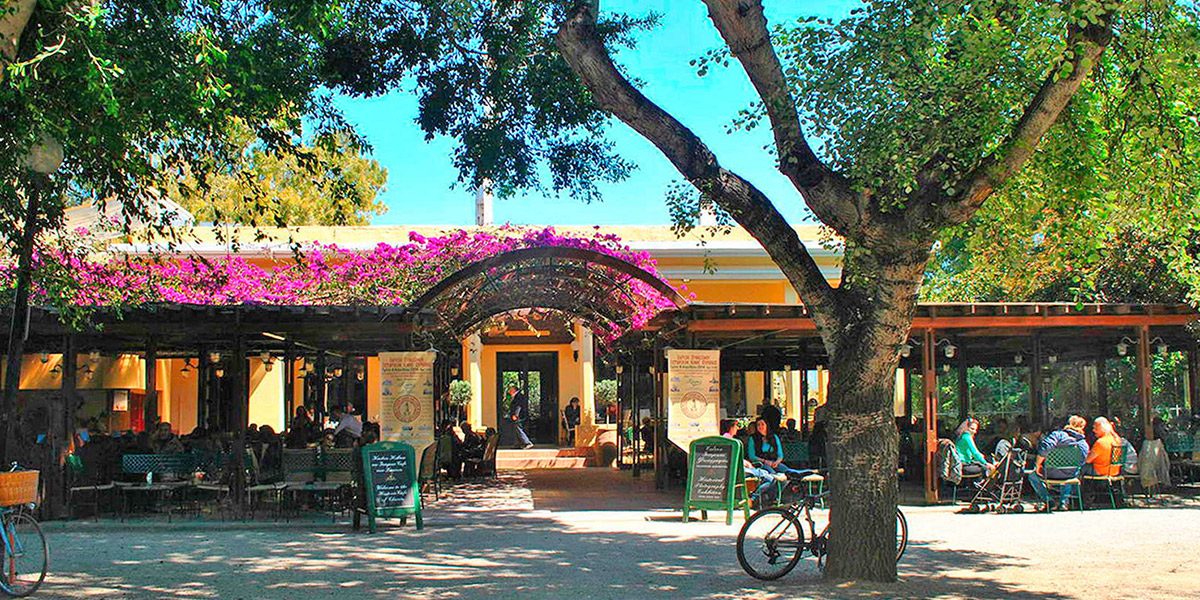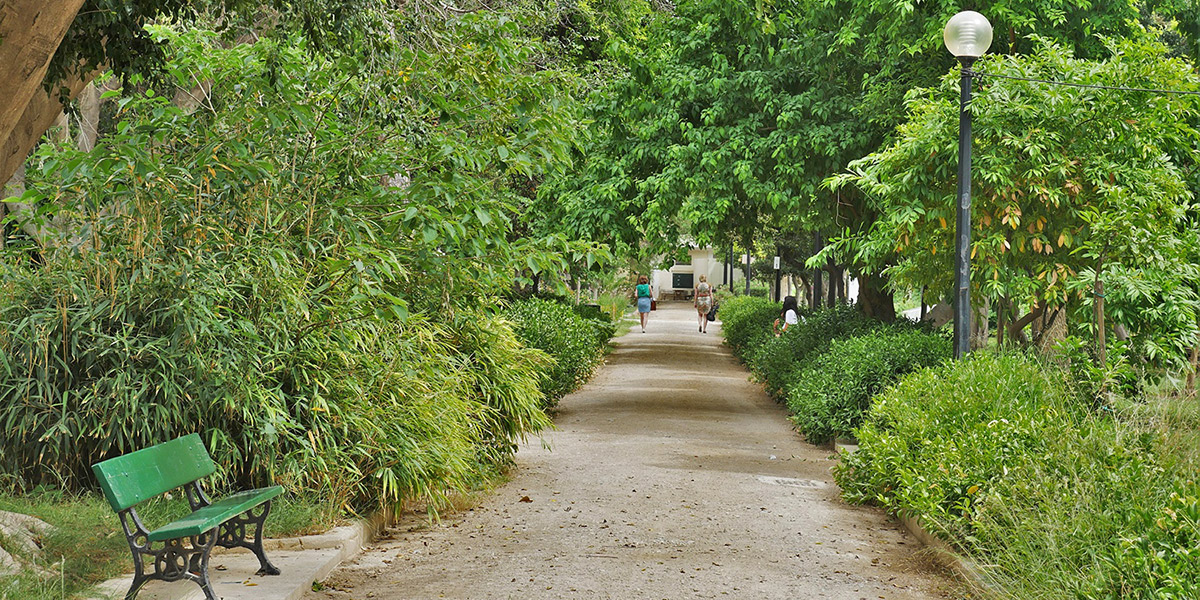In the last years of the Turkish rule, when the city was suffocating inside restrictive walls, the need for free space for recreation was very intense.

Wishing to meet this need, Reouf Pasha ordered and supervised the construction of the Municipal Garden of Chania, in 1870. The garden was designed according to the European standards of the time, and became the first public benefit project of the city. Footpaths and flowerbeds were designed, evergreen trees and flowers were planted, sculptures were placed; one of them was a statue of Hermes, found in Ancient Kidonia.
The garden served as a place for recreation for the locals, as well as for the troops of the Great Powers.
Later, in 1918, renovation works were done, so new trees and flowerbeds were added. In addition to that, the construction of a clock tower (a focal point of the city, located at the north-eastern side of the Municipal Garden) began in 1924 and was concluded in 1927.

A building that can be seen in the middle of the garden housed the Cretan Parliament in the years of the Cretan State, and it was later used as a theatre, a café and a cinema. In May 1980, the first municipal cinema in Greece began to operate in the same building, and it still opens every summer.
The last renovation of the garden was completed in March 2023, involving the care and renewal of the greenery, maintenance of the playground, and the refurbishment of the existing small artificial lake.
Around the Municipal Garden, jasmine plants are planted. The traditional flower of the city of Chania.




